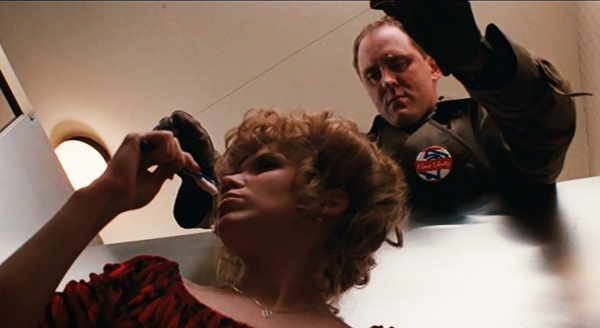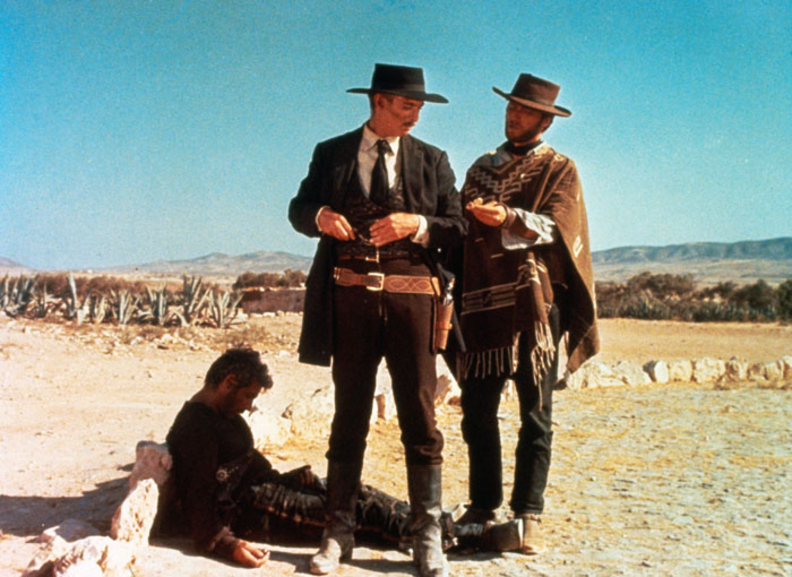Christian Marclay’s The Clock (2010) is an ambitious 24-hour montage stitched together from feature films and TV shows. Each clip, ranging from a split second to a few minutes, takes place during the time of the day at which it plays. Over the next few months, I will attempt to see all twenty-four hours at the Tate Modern in London, documenting the experience in a way as haphazard as the fractured experience of watching the work itself.
Meshes of the Afternoon
Part 4 of this series. I wrote this article after viewing 17:02–17:55 (53 minutes) on 4 November 2018 and 16:30–17:02 (32 minutes) on 8 November 2018. Seen: 11 hours 57 minutes. Remaining: 12 hours 3 minutes.
Read Part 1: Introduction, in which I discuss my initial excitement about the return of The Clock.
Read Part 2: Matineé in which I reflect on familiarity, recognition, tension, time’s passage, simultaneity, and death.
Read Part 3: Graveyard Shift in which I stay up all night and misidentify noir.
A few weeks ago I posted about my ill-advised all-nighter. Since then, Ari Haque at the Guardian has outdone me, and seen all twenty-four hours in a single sitting! She observes many of the same things that I did in earlier instalments, including anxiety about the time of day one can in conscience begin drinking, the value of timepieces, the strange habit of steak for lunch, and the relationship between time and death.
Since my overnight challenge, I’ve been back for two short episodes to fill in gaps. Over the past weekend, I did an additional four hours overnight. This is a short post with some thoughts I had on one afternoon, before I discuss 6–10am in greater detail in a later post.

This time I went with a friend. We got in at 17:02, to John Lithgow hanging menacingly over the side of a bathroom stall with a garrote, considering whether to strangle a woman. I hadn’t seen this film, but it’s apparently Blow Out (1981), based on Antonioni’s Blow-Up (1966). From the wikipedia article, Blow Out apparently makes allusions to The Conversation (1974)— which in turn was also based on Blow-Up. Confusing, I know. Even more so since both of the other films also appear in The Clock: Blow-up at 6:15am, and The Conversation a few times in the morning, including a scene with a telescope at 7:48am.
I cannot recommend Coppola’s The Conversation highly enough, however, and, for what it’s worth, I think it is is not only better than the original Blow-Up, but it is quite possibly better than the two Godfather films that Coppola made on either side of it. In what must be a rare instance of one director having two films nominated for best picture, The Conversation lost, in 1974, to The Godfather Part II.
At 17:05 there were duelling duels; that is, there were pistol duel scenes from different films intercut with one another. Clint Eastwood and Lee Van Cleef appeared in iconic roles, but apparently not iconic enough for us to place them. My friend said “A Fistful of Dollars?” I said, “I think it’s The Good, the Bad and the Ugly?” Confoundingly, the wiki said “For a Few Dollars More.” So we covered the whole Man with No Name trilogy. My friend later confirmed that the wiki was right: it’s from For a Few Dollars More.

At 17:14 we found a seat; by coincidence it was precisely the same seat in which I’d spent the all-nighter: second from the front on the right. It was a great vantage point into The Clock‘s timeless gorge of changes*.
Marclay began to play surealist tricks around 17:15. A shot of a woman putting a roast into an oven is followed immediately by a man withdrawing cash, implying an unlikely transformation due to the expectations set subliminally by continuity editing. The Clock frequently uses the device of showing a character gazing out-of-frame, followed by a countershot into another film. This can be jarring, as we expect to see what the character sees, but The Clock presents us with something entirely implausible. Similarly, characters often walk through a doorway into another film, changing both the setting and the character in a cut. This shows how many of the expectations of film are structural, rather than based on their content, and draws attention to the powerful devices of Hollywood continuity editing (also known as Hollywood classical style or Hollywood continuity style).
At 17:41, there’s a sequence of Celia Johnson boarding the train in Brief Encounter. At 17:49, my friend pointed out An Occurrence at Owl Creek Bridge, the short story of which I’d read as a teenager, but I hadn’t realised that it had been adapted for TV, and which I’d quite like to see.
Michael Caine, Gene Tierney, Jeremy Irons, and Alain Delon made a surprising number of appearances. At 17:51, Delon appeared in the painfully cool Le samourai (1967), which is much better than Le cercle rouge (1970) which appears more frequently in The Clock.
During this session I thought about the way in which the clock motif constrains film locations. There are plenty of bedside clocks, as I discussed last time. But there are also boardrooms, classrooms, stations, airports, and clock towers. Some scenes contain the time only incidentally, and these tend to be in a relatively small set of places. Unless a clock tower looms, for example, there would not be a wide shot of a park, or of nature. Landscapes are thus virtually eliminated, unless there is a character who happens to check his watch against a natural backdrop, as a result of time pressure. Meanwhile offices appear constantly. This can draw attention to the artificiality of time, and the spaces in which time matters.
I’ll leave it there, as I prepare to post about 6–10am soon.
No Trackbacks.